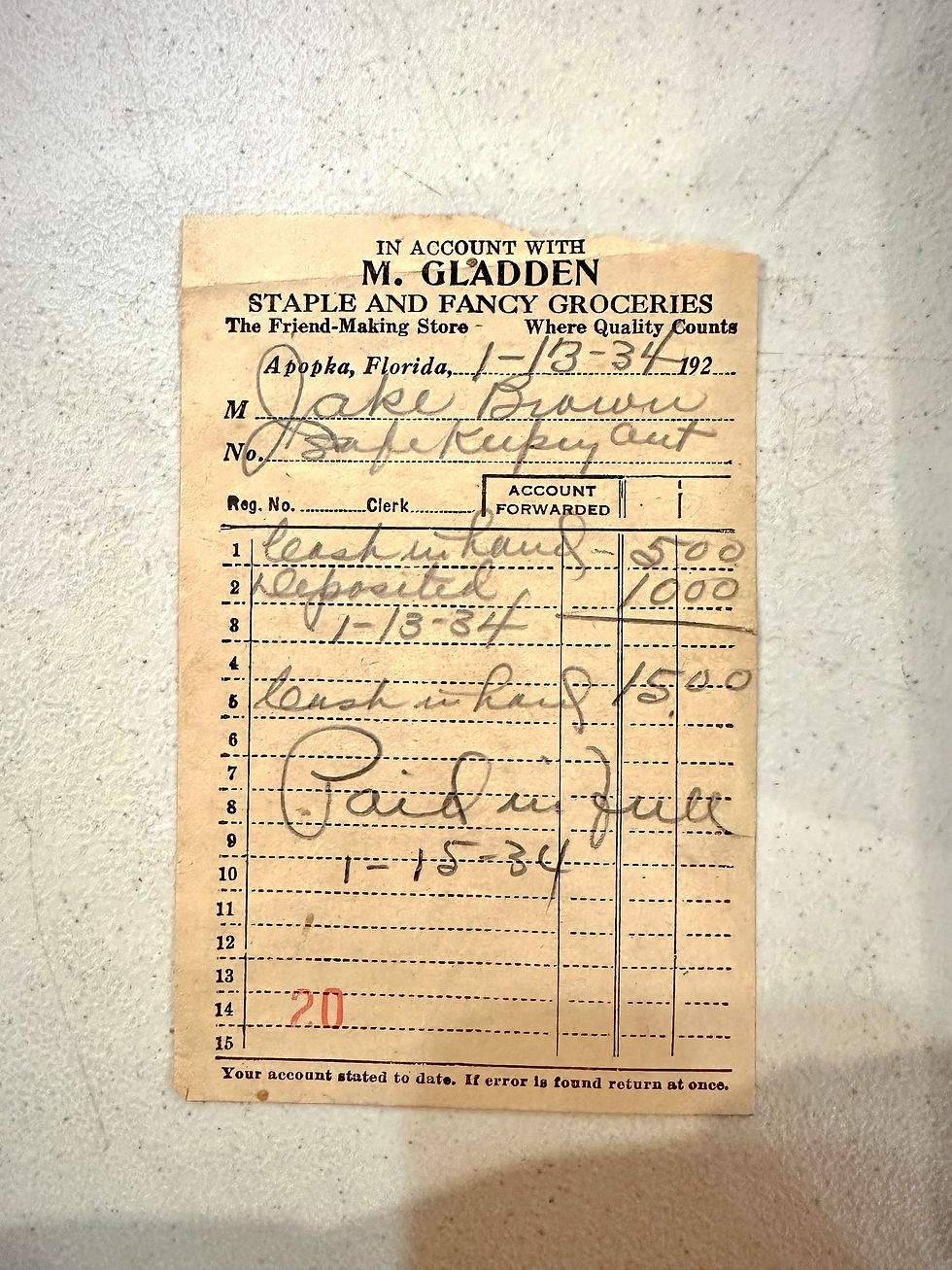"Night At The Museum"
- Elio Singer
- Jun 13
- 2 min read

Hello, reader! On Wednesday, I finally began my first day at the Museum of the Apopkans to start on the Gladden Collection Project. Before I started, I prepared a metadata format based on the RICHES sheet, in which I would provide detailed information for each object. I anticipated completing these “sheets” based on what I could speculate or research about the artifact as well as what information Ms. Boykin expounds upon in her almost daily divagations to the museum. Additionally, I prepared sticky notes to label the objects with accession numbers. The Historian, Modesto, let me borrow a tape measure from the museum to record dimensions.
At the museum, I spent about four hours gathering information and speaking to Ms. Boykin, who happened to be at the Museum of the Apopkans while I was working. She informed me that she brought the rest of the Gladden Collection binders and two photo albums which contained the intimate memories of Marie and Michael Gladden. I was taken aback by these beautifully preserved photographs from not only the lives of the Gladdens but also the living memory of Apopka’s Black community amidst the endurance of Jim Crow laws, racial violence, and a new age of tumultuous social inequity. In the second photo album, Ms. Boykin also included her personal collection of photographs concerning Phyllis Wheatley High School, previously known as the Apopka Colored School. Ms. Boykin’s younger photographs of herself were instantly recognizable; her smile lit up her surroundings, as it continues to in the present day. I was delighted to be allowed to eventually digitize the scrapbook items as well and look forward to flipping through the scrapbooks after I work my way through the binders.

My favorite object that I researched on Wednesday is a 1934 account receipt from M. Gladden Staple and Fancy Groceries for a local, Jake Brown. According to Ms. Boykin, the customer was a survivor of the 1920 Ocoee Massacre. Mr. Brown worked as a citrus hauler and orange grove servicer by day and a bootlegger by night. The Brown family was infamous for their close association with Apopka’s robust “moonshiner” scene. Coincidentally, Jake Brown’s grandson, Eddie C. Brown, went on to become one of Wall Street’s most prominent Black billionaires. Ms. Boykin had pointed Eddie C. Brown out in an elementary school class photograph earlier that day. I ended the day completing basic metadata for five object collections. I am eager to return to the Museum of the Apopkans next week on Wednesday, where I will continue working on the first binder!
In addition to my in-person responsibilities, I have completed metadata sheets for the Judy Ustler Babb folder for the remote portion of this internship. Coincidentally, the Museum Technician, Justin, knows Judy Ustler Babb very well! He informed me that she often visits the museum on Fridays. I sincerely hope that I get to meet her one day and speak with her about my work on her fascinating assembly of family artifacts.










Comments